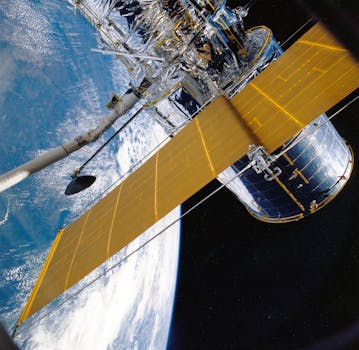
Beyond Earth: How Recent Advances in Satellite Tech are Shaping Global Communications
Recent advances in satellite technology are revolutionizing global communications, enabling faster and more reliable connections around the world. Satellite Technology has come a long way since the launch of the first commercial satellite in 1962. Today, satellites play a crucial role in facilitating global communications, providing internet access to remote areas, and supporting various industries such as navigation, weather forecasting, and earth observation.
The recent advancements in satellite technology have been driven by the growing demand for high-speed internet and reliable connectivity. The launch of new satellite constellations such as Starlink and OneWeb has enabled the provision of low-latency and high-speed internet services to underserved communities around the world. These satellite constellations are designed to provide global coverage, with thousands of satellites working together to provide a network of interconnected satellites.
The Impact of Satellite Technology on Global Communications
The impact of satellite technology on global communications cannot be overstated. Satellites have enabled the provision of internet access to remote and underserved communities, bridging the digital divide and promoting economic growth. Satellite technology has also enabled the provision of critical services such as emergency response, disaster relief, and remote healthcare. Furthermore, satellites have enabled the collection of valuable data on the environment, climate, and natural resources, supporting informed decision-making and sustainable development.
The use of satellite technology has also transformed the way we communicate, enabling real-time communication and collaboration across the globe. Video conferencing, online meetings, and social media have become an integral part of our daily lives, and satellite technology has played a critical role in enabling these services. The reliability and speed of satellite communications have also made them an essential tool for businesses, governments, and organizations, supporting global trade, commerce, and diplomacy.
Challenges and Opportunities in Satellite Technology
Despite the many advances in satellite technology, there are still several challenges that need to be addressed. The growing number of satellites in orbit has raised concerns about space debris, collisions, and the long-term sustainability of space exploration. Additionally, the high cost of launching and maintaining satellites has limited access to satellite technology for many countries and organizations.
However, these challenges also present opportunities for innovation and growth. The development of new technologies such as reusable rockets, satellite servicing, and in-orbit assembly has the potential to reduce the cost of access to space and promote greater sustainability. Furthermore, the growing demand for satellite services has created new opportunities for investment, entrepreneurship, and job creation in the space industry.
The Future of Satellite Technology and Global Communications
The future of satellite technology and global communications is exciting and rapidly evolving. The launch of new satellite constellations, the development of new technologies, and the growing demand for satellite services are all driving growth and innovation in the space industry. As satellite technology continues to advance, we can expect to see even faster and more reliable connections, greater access to satellite services, and new opportunities for economic growth and development.
In conclusion, recent advances in satellite technology are shaping global communications, enabling faster and more reliable connections around the world. The impact of satellite technology on global communications has been profound, and the future of the industry is exciting and rapidly evolving. As we look to the future, it is clear that satellite technology will continue to play a critical role in promoting global connectivity, economic growth, and sustainable development.






